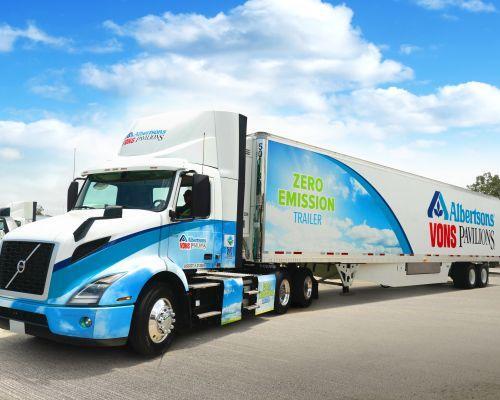Factors in Electric Delivery Vehicles’ Impact on Greenhouse Gas Emissions
A new study from University of Michigan researchers shows that when, where and how electric delivery fleet vehicles are charged can greatly impact their potential to reduce greenhouse gas emissions.
While electric vehicles represent a small fraction of delivery vehicles today, that number is growing. In 2019, Amazon announced plans to obtain 100,000 electric delivery vehicles. UPS has ordered 10,000 of them and FedEx plans to be fully electric by 2040.
[Read more: Albertsons Begins Zero-Emission Grocery Delivery Fleet]
A key point of the study is that both the emissions directly tied to charging the vehicles and emissions that result from manufacturing the batteries must be considered. Charging practices that shorten a battery’s lifetime will lead to early battery replacement, adding to the total greenhouse gas emissions associated with that vehicle.
The U-M researchers found that 50% to 80% of the lifetime emissions associated with an electric delivery vehicle’s battery occur during charging. Therefore, charging from a cleaner energy source—such as an electrical grid with lots of renewables—is one of the most impactful ways to lower the emissions of an electric vehicle.
When both charging and battery degradation were considered, the researchers found that greenhouse gas emissions could be lowered by as much as 37% by optimizing charging strategies.
“Our evaluation strategy leads to two main recommendations for companies investing in fleets of electric vehicles,” said Maxwell Woody of U-M’s Center for Sustainable Systems, lead author of the study published online July 9 in the journal Environmental Science & Technology.
“The first is to consider battery degradation when determining when to charge and how much to charge. Some charging strategies can extend battery lifetime, and this will both lower greenhouse gas emissions and protect the company’s investment.”
The U-M team’s second recommendation to fleet owners is to consider where the energy charging the vehicle comes from. A vehicle charged from solar or wind energy and a vehicle charged from a coal- or natural gas-fired power plant will have very different environmental impacts.
“Considering the charging source can help companies determine the best places to charge, as local grids vary across the country. Companies should prioritize fleet electrification in regions that provide the greatest carbon-reduction benefits,” said Woody, a recent master’s graduate of U-M’s School for Environment and Sustainability who now works as a research area specialist at the Center for Sustainable Systems.
In their modeling study, the researchers analyzed four charging strategies and looked at their lifetime environmental impacts. The researchers showed that a baseline charging scenario in which a vehicle is fully charged immediately upon returning to a central depot resulted in the highest emissions. Employing alternative charging methods led to emissions reductions of 8% to 37%.
“Charging the vehicle as soon as it returns and charging the vehicle up to 100% result in a lot of time spent sitting at the depot/charging station with a full battery. This extra time spent fully charged will cause the battery to wear out more quickly—so quickly that the battery may need to be replaced sometime in the vehicle’s lifetime,” said study corresponding author Parth Vaishnav, assistant professor at the U-M School for Environment and Sustainability.
“Creating this additional battery produces additional greenhouse gas emissions, as well as additional costs.”
Charging the battery only enough to complete the day’s route, a practice the researchers called sufficient charging, led to a large increase in battery lifetime—in some cases more than doubling it. As a result, emissions tied to battery production were reduced.



